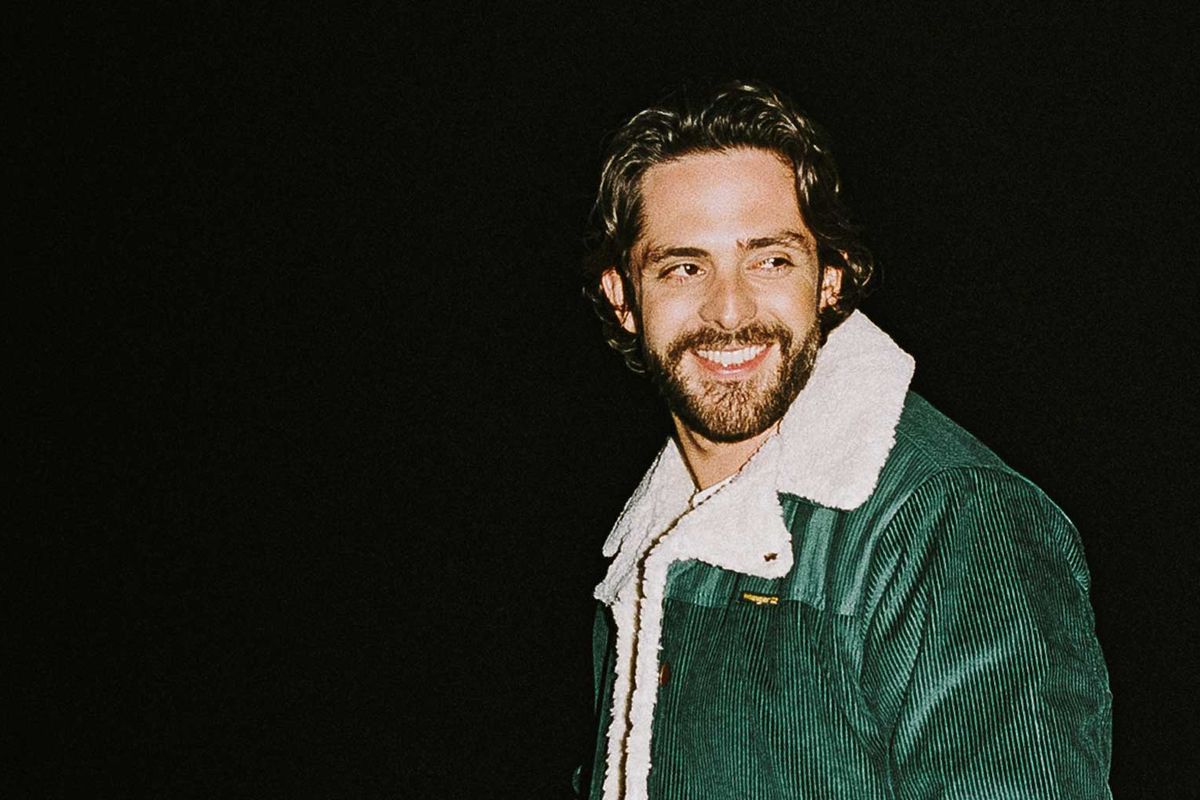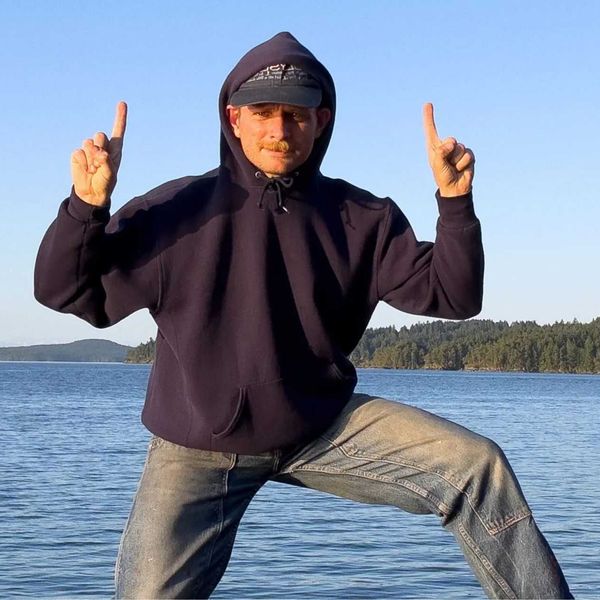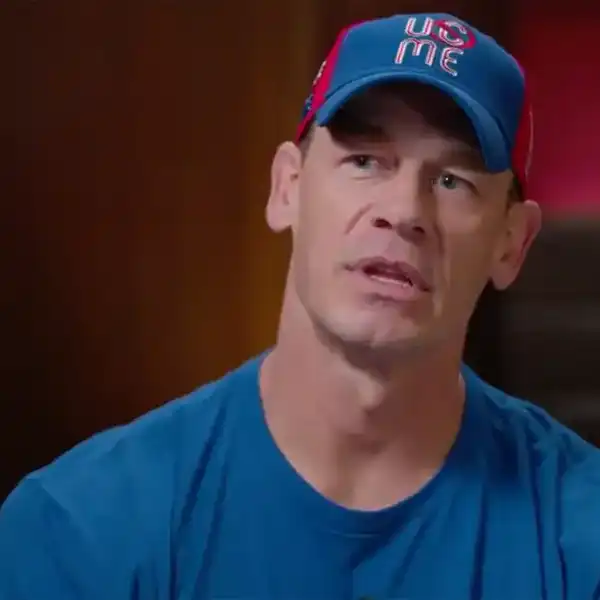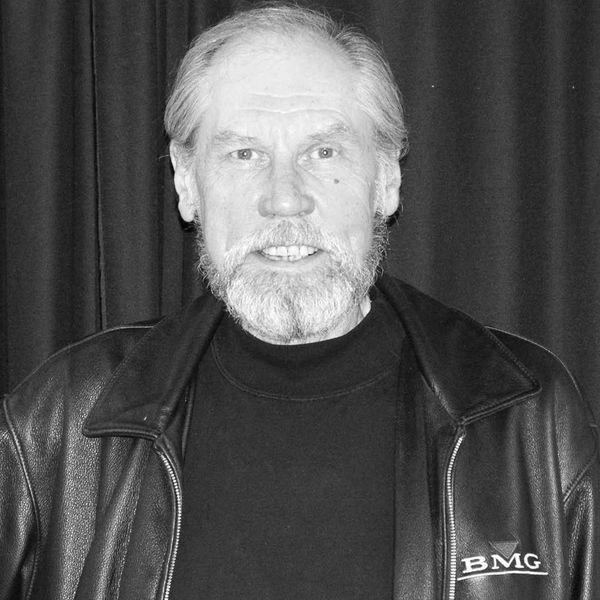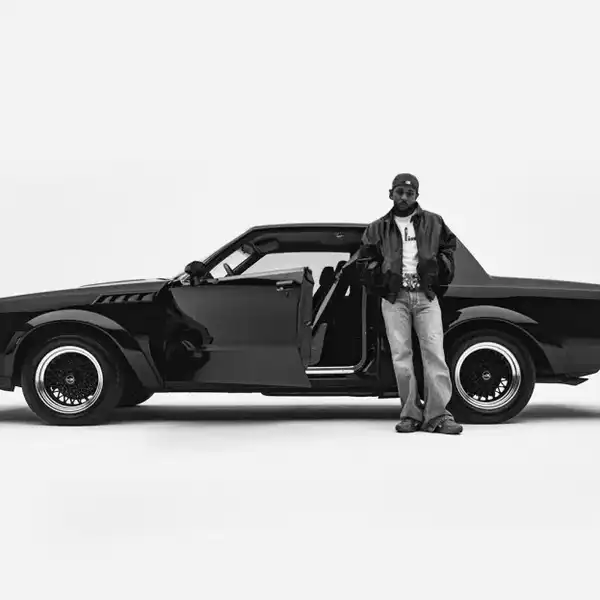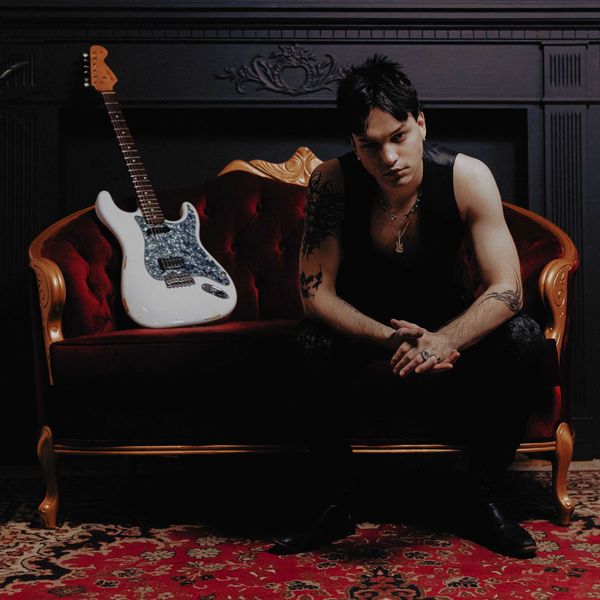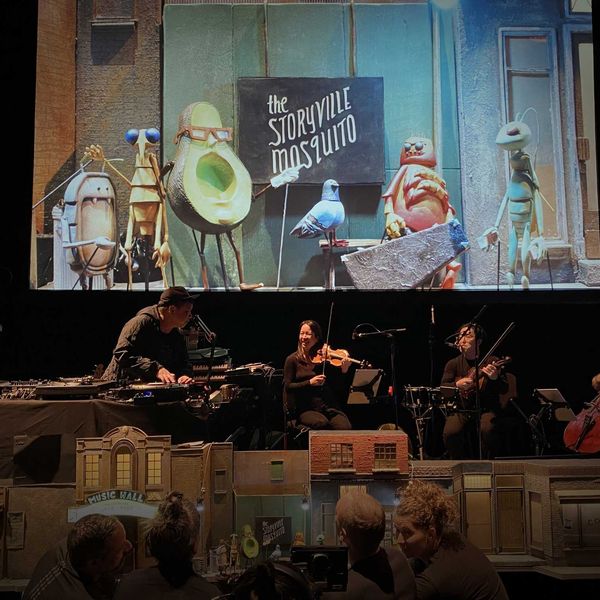Bill King Profiles Late Jingle King Syd Kessler
Canadian entrepreneur, mega personality Syd Kessler passed at age 74, March 7, 2021.

By Bill King
Canadian entrepreneur, mega personality Syd Kessler passed at age 74, March 7, 2021. I paused for a moment to think about how small words are when placed next to a person as accomplished, revered, at times begrudged and, as they say, “bigger than most lives,” then weighed the possibilities.
I decided to chart a course through the inner workings of Kessler’s commercial work and interview a few of the young guns who made it all happen: the writers, producers, and players: Lou Pomanti, Tim Thorney, Robert Armes, Bob Johnston, Rick Shurman, and Tim Tickner.
During the ‘60s and ‘70s, Kessler worked as a writer for Chuck Blore Creative Services and was hired to develop the game show The Crosswits – fashioned after a crossword puzzle. From 1974-78 he managed Kessler Productions, writing creative commercials for the Canadian marketplace. Kessler would soon be hailed as the Jingle King.
After a series of early creative successes, from Hollywood screenwriter to award-winning advertising producer, Kessler started a joint venture in 1988 with John Labatt Ltd., called Supercorp. Under his leadership, Supercorp grew from $10M annual revenue to over $150M in just four years, becoming the commercial production industry's unrivalled leader, owning enterprises like HYP&N Media Buying Services, The Partners Film Company, The Animation House, Sounds Interchange Recording Studios, and the Air Company. Supercorp controlled 68% of all advertising production in Canada and 2% of the TV commercial production business in the US. Kessler was also one of the "bricks and clicks" pioneers in North America.
This from a guy who never finished Grade 10 at Westdale Secondary School in Hamilton, Ontario and when on his game smoked four packs of cigarettes a day and worked 70-hour weeks.
In 1994, he created The Kessler Group to address a growing need in the advertising community to move away from the broadcast advertising model, with its inherent inability to deliver measurable results, to a new advertising model called narrowcasting. The Kessler Group secured contracts with such notable American firms as Dow Jones, Wal*Mart and US West. On the heels of this success, he became Co-Director of KPMG's e-commerce practice in 1997.”
“When he interviewed me, he said that I would have to meet his music director Robert Armes and if he liked me, that was it, you're hired. 10 years of working with him were ‘big learning’ in the ad biz," recalls Bob Johnston. "I also cast talent for him, made swag for him - sweat pants and shirts. One day he came into my office and asked, “When are my sweets arriving,” I said,” In a few weeks.” He said,” If they are not here by tomorrow, you’re fired. My answer was – “get the fuck out of my office, and I’ll tell you when.” He laughed his head off. There could be a few chapters in my book about those days for sure."
It was said Kessler could be difficult being around. My own one experience was when I got the call to sing on a jingle after a successful run with the amicable, patient, and supportive Doug Riley. Doug had just got the Coors account and auditioned me for the coming Silver Bullet campaign. I got it, followed by Oland and Schooner beer commercials. Doug points me toward. Kessler’s reputation scared the hell out of me and of course, the track I was called on to sing was way above my singing range. During playback, I mostly stood there and battled cardiac arrest. Then Kessler interjects – “Are dyslexic or something?” End of session. I was glad to walk.
“He was a character. The degree of difficulty was how thin your skin was. It was not for the faint of heart. Let's put it this way, I found him just a delight to work with. We had many battles - him and me, but it was always for the right reason, which was music and how can we make this track better,” Tim Tickner says.
Continuing:. “As a head writer, I guess I must have been young and eager to get a foot in the door. I could give two shits about advertising. And to this day I still give two shits about advertising. But it was a chance for me to work with fabulous musicians in a fabulous studio with fabulous engineers. And, you know, I mean, I was in way over my head at the time.”
Producer Robert Armes adds that "Syd was a larger-than-life character. Think Henry the 8th in sweatpants and moccasins with a parakeet on his shoulder. He was probably the funniest person I have ever met. A huge presence. Was he difficult? No, that is not a word that comes to mind. Outrageous and ultimately insightful is more to the point."
Armes continues: "I was a singer-songwriter, working clubs, making demos for a record deal I was hoping to get while doing some arranging on small films and performing in local theatre situations, doing my original songs and music. Tony Kosinec introduced me to Syd, after hearing me play. Syd said he loved what I did, what a great songwriter I was and how he wanted to change everything! I was hired as a freelance composer and thought this was cool. The money was great and thought, I could do this for a little while. It went from doing a job a month with him to a job a week, one a day to several a day in about 2 years. Things changed, and I was offered the job of his musical director which I loved and did for about 12 years. The company grew enormously, and I was lucky to be a part of the rocket ship growth. We had the best players, the best singers, the best engineers at our disposal. We went from a tiny 4 track studio on Hazelton to two great rooms built on Berryman in Yorkville, to Syd buying Sounds Interchange’s two big rooms and eventually expanding to 10 recording studios."
"After returning from Atlanta in late 1979, I jumped into the session player side of the business already in full swing courtesy of producer Paul Hoffert who brought me to Morgan Earle. Paul, Ralph Cole, Marvin Dulgay and others handled the lucrative writing chores. I along with drummer Gordy Neive, bassist David Piltch and others played on the demos and occasional final sessions. I could sense this was where serious money hung out especially if one caught the ear of a high-end jingle house. Many advertising houses and sales folks gathered at Jingles, a bar up to around where the old CHUM building up Yonge Street near St. Clair Avenue resided for lunch and sales pitches and the players at first The Underground Railroad then the Montreal Bistro, close to studio row on King street east. I distinctly remember CHUM salesmen Gord Kidder and Jack Addis, smooth to polished bone pitchmen, schmoozing with the agencies."
As Lou Pomanti remembers: "Syd was larger than life, that's for sure. He could be amiable, but then might turn and yell at you for something you said that he didn't like. He was letting you know he was the boss. I worked at the Air Company in the late ‘80s for a few years, and for one year I was his exclusive writer. My session career was already in full swing at that point, and I, already very much in demand. When he asked me if I wanted to work for him, I said ok, but I could only give him 50% of my time, as the other half of the time I needed to be a free-lance session player. Honestly, at that time it was great being in the jingle biz. I like to work every day. Every day was a combination of writing and going into the studio and recording. Sounds Interchange was a great studio with great engineers. I was in the studio every day for years and years. You can't buy that kind of experience anywhere,."
Tim Thorney was closer than most. “Syd was a guy who loved the sixties and that style of radio advertising and kept that thing going," he says. "Freaky radio spots. He loved radio but not necessarily TV advertising. He was a man of great contradictions. He could be a visionary with a soft-spoken cadence of a true believer, or he could be as vulgar and rude as it gets. He would be extremely kind to some and cruel as shit to others. Syd was very funny, so you’d tend to forgive his bad behaviour and appreciate him for the good parts.
"By the time I and Jody Colero got there his best days were behind him. We wanted to keep the Einstein Brothers and did a reverse takeover with him. What he wanted to do was bill us as he did with advertising companies. We weren’t allowed to talk with clients. Our mandate was to bring Supercorp into the record business. We signed Cassandra Vasik and Neil Donnell and between FACTOR, Labatt’s and Sony we kind of made it work.
"Sid Oland was the money man from Labatt’s that fronted Supercorp and the Einstein Brothers were the fifth wheel in that. Kessler had spent years studying the mystical form of Judaism known as Kabbalah. As soon as it was going, he moved Kabbalah into his office – the top floor. His desk was on a pedestal – right next to it. The peer guys were “what the fuck,” you couldn’t get meetings because of the Kabbalah. He was serious about this.
Armes continues: “Syd provided a lot of the opportunities that came my way as a composer, orchestrator, arranger, producer with my own company, I owe him so much to him for my career. Hundreds and or thousands of other musical and voice-over people made their living on contracts with ACTRA and the A.F. of M. with those residuals, all because of Syd and the business model he and Sachedina created.
"I am eternally grateful for these opportunities and for knowing this truly remarkable man. Our lives were so connected and intertwined for so long together. Family, kids -these were golden times, a privileged era of fantastic recording studios, the best recording engineers, rooms full of great musicians and singers. It was heaven."
Armes goes on: "Syd was a very smart business guy. Sure, he saw the change that technology was bringing to music production. He saw that fewer people could create finished tracks and keep more of the money. His problem was that he had ten recording studios to fill and book, so there was a lot of moving gear up and downstairs to duplicate what we could do in the room. But the vibe was never the same. Rooms full of great engineers, great talented players, singers and voice talent make the whole project way more exciting than a guy with a bunch of synths in his bedroom. He loved the show, loved seeing the looks on his client's faces when a roomful of string players from the Toronto Symphony or the best rhythm section guys in town were laying it down. He made their little ad jobs seem big and important. And he brought tremendous marketing expertise along with it, something that often is sorely lacking or not required from music production companies in the current era.”
The big commercial houses got the lion’s share of the pot of gold ,Tickner remembers.
“We averaged around 300 tracks that went to air each year. Robert Armes tells me in the 1980s and for a couple of years, we did 400 tracks that went there, which seems like a lot, but that's what we did.
"Inside the rooms, that’s where the barnstorming took place, and those sessions were always different. We had a music room with Mark Hukezalie, Robert Armes, and me and Sid, and a lot of times Sid was conducting business so we would flesh out a track until he came in and gave it the OK, either hate it or whatever. And then we would hash it out from there. And that was it. We didn’t have a lot of time to ponder over the tracks for obvious reasons. Syd always had the final say which is where he and I had differences in opinion. But to his credit, the weirder I wrote stuff, and the more outside, the more he would try to sell it. He was fantastic. That way, I got more tracks on the air because of him.
"The sessions were usually at nine o'clock in the morning, an hour for the band, an hour for vocals, and an hour to mix, and voiceover in the mix. And maybe it was an hour for voiceover. But anyway, it was three hours. And then we would walk across from Studio One to Studio Two and do it all over again. And that was every day. And sometimes we would do three or four tracks in one session. If it was a campaign, we would just rattle them off.
"I wrote Hugga Mugga Max which was a big one. I wrote Black’s Photography, which I think ran for about 25 years. Pizza Nova was a big one that I think is still on the air thirty or forty years later. We did Look Who's Drinking Pepsi Now - every product you can imagine - every bank, every car campaign. Every beer at the time.
It was like going to university where you had a complete run of the place, and 10 recording studios and that's all you did. You worked in the best studios with the best musicians and the best engineers on the best products. It kind of spoiled me in many ways. In the ‘90s I went to the Einstein Brothers, and we just kind of redid it again for another 10 years.”
Rick Shurman tells FYI that "I was Syd's partner in the Air Company for the entire run. He never sold it to Labatts when Supercorp was created. I owned the majority of and held out to form what became Pirate Radio and Television with Robert Armes, Kerry Crawford and Terry O’Reilly. Some of us had no interest in working for the brewery. Syd was everything everyone suggested. Larger than life, a tour de force and a “svengali” of singular proportion. He was one of those very few people you meet in your life you can count on one hand, which leaves you breathless. He will be missed. We had our moments, but I always held him in high esteem and will always be grateful."
Pomanti adds: “He was a man of his time, and he made the most of it. He started in a little place on Hazelton Ave, built it into the Air Co., made a fortune and built a huge building on top of the studio. I hope he saved some of that money?”
A graveside funeral was held on March 9 at the Beth Jacob Cemetery, 1250 Snake Road, Burlington.

